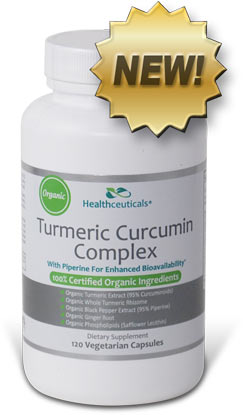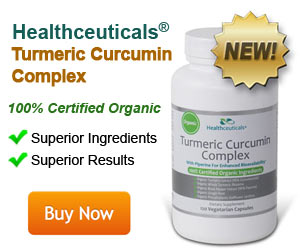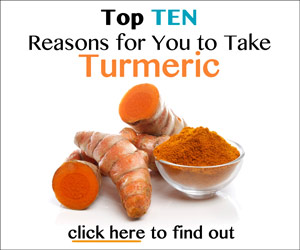Turmeric Compounds Can Help Bring Out or Protect the Best in You

DNA provides the natural genetic blueprint for the traits that make each of us unique. These traits include the risks of developing certain conditions. However, decades of research demonstrate that outside factors can change how those blueprints are actually carried out. These factors include: (ii.9, 193)
- Diet
- Environment
- Stress
- Behavior
These blueprint changes are not permanent modifications to our genetic DNA. They are epigenetic changes that in effect could stimulate healthy genes while keeping unhealthy ones silent (or vice versa). In very basic terms, lifestyle, environment, and diet factors are transformed into molecules. These biochemically stimulate proteins that switch a gene on or off and even amplify or suppress a gene's activity. (ii.9, 193, 194)
One example is the turmeric compound curcumin. Recent research suggests it is a dietary molecule that has epigenetic activity. Scientists have shown that curcumin selectively stimulates beneficial epigenetic changes to genes often involved in diseases such as cancer and neurological conditions. Since epigenetic effects occur at low concentrations, they could in fact explain curcumin's measurable effects despite its poor bioavailability. (ii.9, 194)
Some of the molecules and processes involved in epigenetic changes that are affected by turmeric compounds include: (ii.9)
- MicroRNA (miRNA)
- Histone modifications
- DNA methylation
What Are MiRNAs, HATs, and HDACs?
Compared to DNA, MiRNAs are a relatively new discovery in biology. It's been known for 60 years that DNA carries the genetic instructions needed for the cells to function. Genetic instructions give the cell the codes to make the proteins needed for cells to function. But how do cells get these DNA instructions out of the cell nucleus? (ii.195, 196)
Gene Expression and Protein Transcription
In processes called gene expression and transcription cells are able to make use of DNA instructions to synthesize proteins. Gene expression produces working copies of the DNA instructions in the form of molecules. Called ribonucleic acid (RNA) and messenger ribonucleic acid (mRNA), these molecules copy and carry these codes out into the cell where the proteins are then produced. (ii.197)
MiRNAs are over 1000 times smaller than mRNA molecules. Their sub-microscopic size made miRNA difficult to detect, which explains why scientists only discovered them in the past 20 years. Instead of carrying out protein codes, miRNA appear to stop mRNA from making new proteins. In some instances, miRNAs also break down RNA. (ii.195)
The histone enzymes involved in epigenetic activity are histone acetyltransferases (HATs) and histone deacetylases (HDACs). Some of the cellular processes they affect include: (ii.9, 194)
- Activating or co-activating transcription factors — proteins that trigger gene activity and production of proteins.
- Silencing genetic activity.
- DNA repair.
- Cell cycle progression — moving the cell from one phase to the next when it is replicating, or making copies of itself.
Why Are These Molecules Important to Your Health?
Because these miRNAs, HATs, and HDACs are involved in fundamental cell functions, they are carefully regulated by cells. If these molecules are unregulated or regulated incorrectly, serious health problems can happen. This includes the development of cancer and other diseases. (ii.9, 52, 129, 198)
For example, HDAC1, which is involved in DNA repair, inhibits p53. This tumor suppressor protein stops a damaged cell from progressing through the cell cycle and gives it time to repair the damage. If the cell can't be repaired, p53 induces cell death. Tumor suppressor proteins prevent damaged cells from replicating itself and making more defective cells. (ii.9, 129)
In cancer, dysregulated HDAC1 can prevent p53 protein from getting rid of precancerous and malignant cells before they replicate. In effect, HDAC1 helps tumor cells to survive. Research indicates that substances that help regulate and restore normal levels of HDACs and HATs — such as turmeric compounds — could be therapeutic. (ii.9, 129, 198)
Evidence that Turmeric Compounds Help Regulate miRNA, HAT, and HDAC Molecules

According to lab and animal research, the turmeric compound curcumin can help keep these molecules regulated. For instance, curcumin counteracts and corrects for abnormal miRNA expression in various types of cancer, including: (ii.9, 199, 200)
Curcumin can also inhibit p300 HAT activity. Blocking p300 HAT molecules suppresses NF-κB, an inflammatory transcription factor known to activate oncogenes in cancer. NF-κB also triggers inflammation in other diseases (such as inflammatory bowel disease (IBD) and diabetes). (ii.9, 13, 129, 198, 199)
One computerized model developed to predict the ability of substances to inhibit HDAC1 predicted that curcumin was not an HDAC inhibitor. However, results from a number of lab, animal, and human studies contradict this prediction. In fact, many indicate that curcumin is a potent HDAC regulator — even more powerful than other well-known HDAC inhibitors. (ii.9, 129, 194, 201)
Interestingly, curcumin's effect depends on the type of HDAC enzyme it encounters. For example, while curcumin lowers levels of HDAC1, it increases levels of depleted HDAC2 found in patients with chronic obstructive pulmonary disease (COPD). This helps restore the effectiveness of anti-inflammatory corticosteroid treatments. (ii.9)
Join the 1000s of People Who Are Discovering the Benefits of Turmeric.

Healthceuticals® Turmeric Curcumin Complex
100% Certified
Organic ingredients
- Organic Turmeric Extract - standardized to 95% curcuminoids.
- Organic Whole Turmeric - provides full spectrum antioxidant, anti-inflammatory turmeric benefits, including turmerones and numerous vitamins, minerals, and phytonutrients
- Organic Black Pepper Extract - standardized to 95% piperine; dramatically enhances bioavailablity.
- Organic Phospholipids - markedly improve absorption.
- Organic Ginger - works synergistically with turmeric to provide more powerful benefits.
- Absolutely FREE of potentially harmful additives and fillers such as magnesium stearate.




